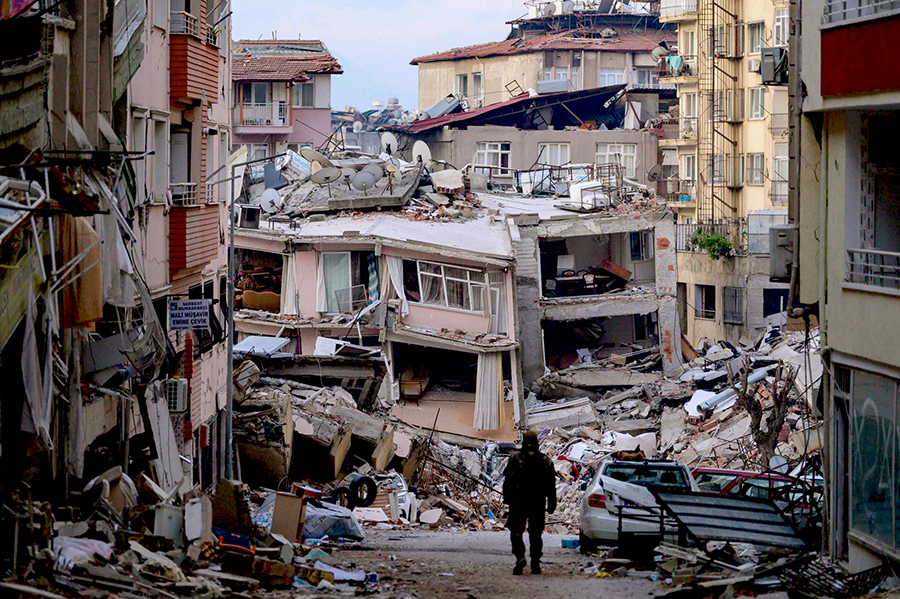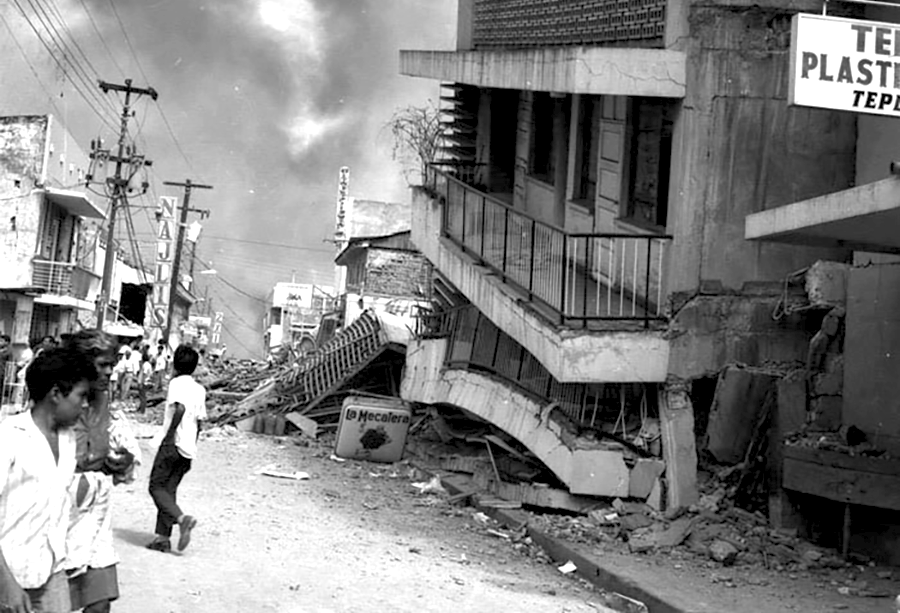Contributed by Glen Davis
Around the world people are stunned, horrified, at the scale of the recent earthquakes in Syria and Turkey. The death toll continues rising, the damage to infrastructure, and the economy, almost immeasurable.
Syria is in the middle of a long running bloody war. There is the government of Bashar-al-Assad, supported by Russia. Against his forces are Islamist opponents, who have attracted some limited support from the United States and its
Turkey is recognised as a constitutional republic overseen by the President Recep Tayyip Erdogan, an autocratic leader who sees current day Turkey as a modern contemporary of the Ottoman Empire. His government is only too quick to crack down on any sign of dissent, let along give any acknowledgement to the needs of groups like the Kurds.

Photo by sin Akgul/AFP: Turkish soldier walks among destroyed buildings in Hatay
With the wide scale collapse, destruction, of built structures, people are wondering why these buildings collapsed so easily, killing, trapping thousands. Fingers are being pointed at planning, or lack of proper planning, involved in the building processes. The government appears complicit in these actions, actions that exacerbate this human tragedy.
Turkey, Syria, neither are bastions of democracy as in both places the bulk of the populace remain poor, disenfranchised from the real power in their nations. The impact of these devastating earthquakes can only increase the prevalent inequality.
Anyhow while we’re on earthquakes let’s go back in time to the 1970’s to another severe earthquake. In Nicaragua 1972 saw a serious earthquake magnitude 6.2. This particularly hit the capital Managua and claimed the lives of over 10,000 of its population of 400,000. Over 80,000 of Managua’s commercial buildings were destroyed. Devastation meant a massive rebuilding program.

Scene in the capital Managua after the earthquake hit Nicaragua on 23 December 1972
Money poured in from around the world ostensibly to rebuild Nicaragua, but it didn’t work out that way. The US backed President Anastasio Somoza embezzled international aid moneys, he also gave rebuilding contracts to friends, and relations, to oversee the building program. The National Guard, a veritable private army for Somoza, also benefited in this corrupt climate as their power grew untrammelled.
Over the next few years throughout Nicaragua opposition to the Somoza regime grew various groupings, some legal, others illegal, coming together to fight the injustices.
The Sandinista National Liberation Front, known to many as the ‘Sandinista’s, dated back to the early 1960’s. They were key players in the popular fights to build a better Nicaragua. They gradually became the vehicle, the public face, of the struggle for a new Nicaragua.
The Somoza regime responded savagely to the peoples struggles increasing the repression, the violence. The death toll rose, as did the struggle to overthrow the corrupt regime.
This subsequently set in motion the rise of the Sandinistas. The various opposition groupings including the National Patriotic Front, the United Peoples Movement united eventually joined the Sandinistas. Opposition to the regime now had a new organised base, setting about removing the current corrupt administration, also promoting an agenda to build a newer, more equitable, society.
In early 1979 the American Government began withdrawing military support though economic aid continued. They wanted the end of the Somoza regime, though sought a new government of their persuasion.
The people of Nicaragua had experienced enough of the corrupt authority, as throughout Nicaragua the struggle became sharper with the forces of the regime becoming increasingly weakened, and isolated. The popular forces gradually gained control over many parts of the country.
A General Strike in June 1979, a provisional Nicaraguan government in exile, all hastened the end of the old corrupt regime. Most of Nicaragua was under Sandinista control. By July, Managua had fallen, and Nicaragua was now led by the Sandinistas.
On July 17, 1979, Somoza resigned fleeing Nicaragua to Miami. By late July 1979 the corrupt regime was in the dust bin of history, with a new, brighter chapter in Nicaraguan history beginning.
Can the impact of the recent earthquake lift the cause of liberation, as it did in Nicaragua?
The future is unwritten.


Be the first to comment on "The earthquake in Turkey and Syria and Nicaragua’s 1972 experience"